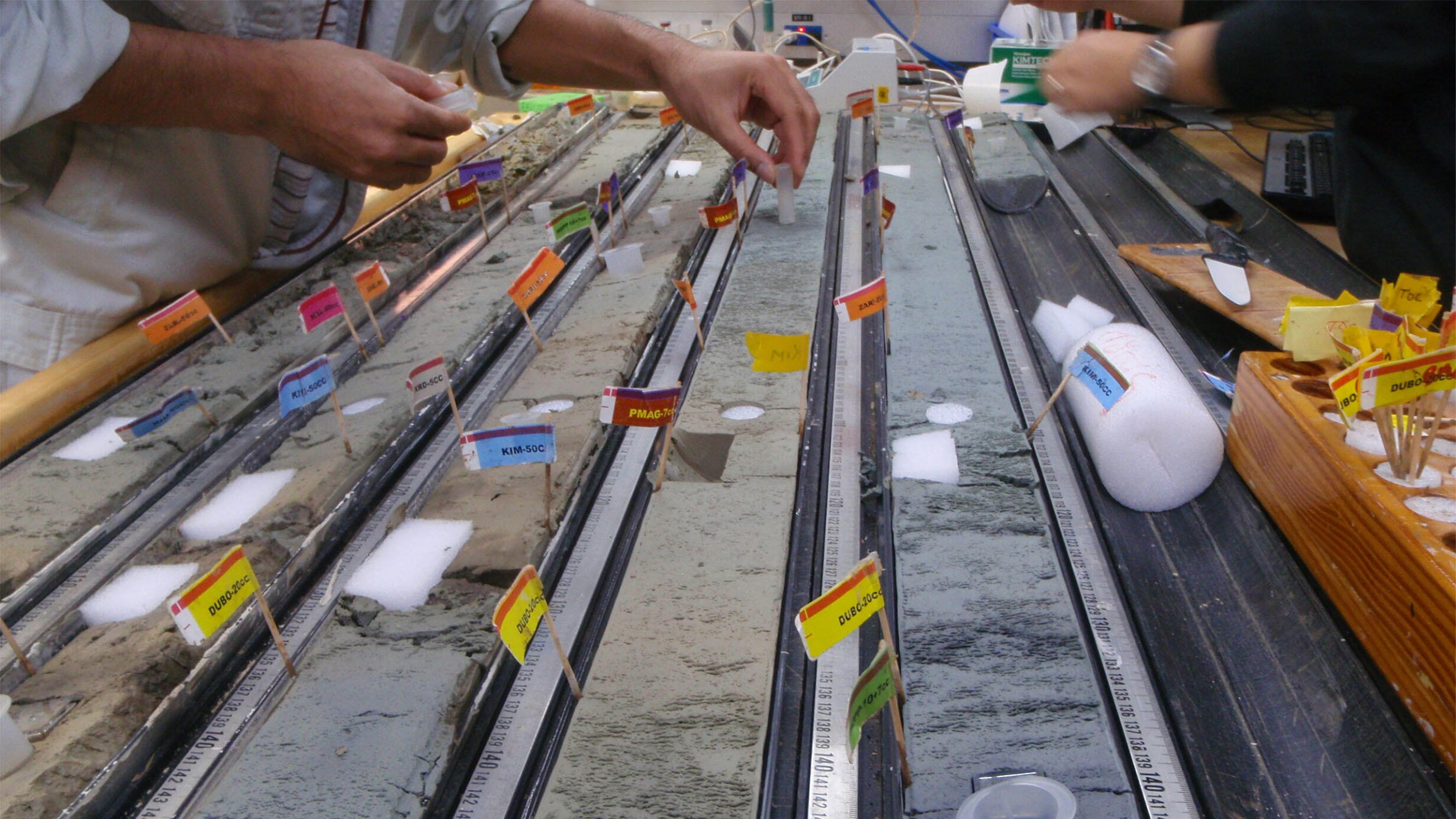 Cores of abyssal clay being prepared for geological sampling. The cores were sampled for microbiology (i.e., the bacteria) before they were split in order to minimize the chance of contamination.
Cores of abyssal clay being prepared for geological sampling. The cores were sampled for microbiology (i.e., the bacteria) before they were split in order to minimize the chance of contamination.What have they uncovered?
A new study led in part by geomicrobiologist Steve D’Hondt at the University of Rhode Island reveals that given the right food in the right laboratory conditions, microbes collected from sediment as old as 100 million years can revive and multiply—even after laying dormant since large dinosaurs prowled the planet. Join D’Hondt at this month’s SciCafe to find out how the revival of these microbes advances understanding of life on Earth and the potential for life on other worlds.
How to Watch
Please RSVP for this free program, and the link to view will be included in your confirmation email.
This program will be presented on Zoom. Please install Zoom in advance to ensure you don’t miss any of the program. You can download Zoom by clicking here or by downloading for your mobile device or tablet from the App Store or Google Play.
Stay in the loop for more upcoming events—sign up for our newsletter.